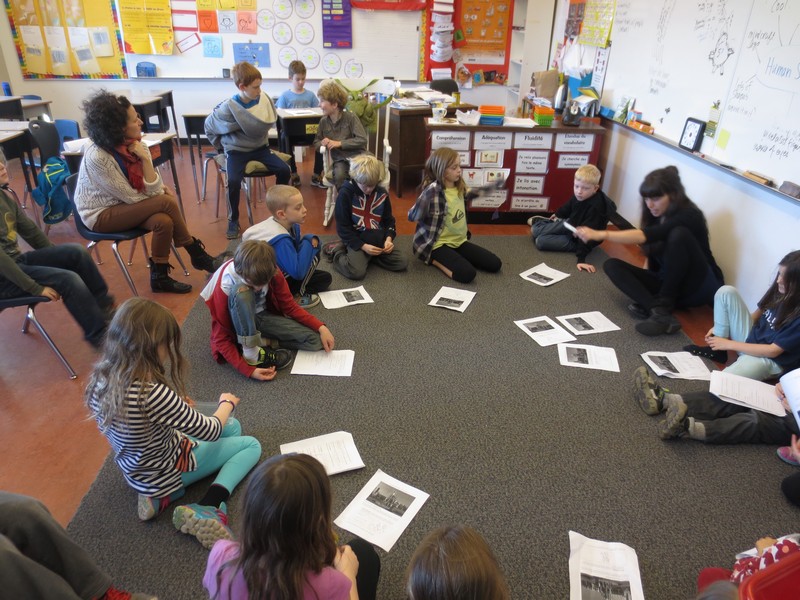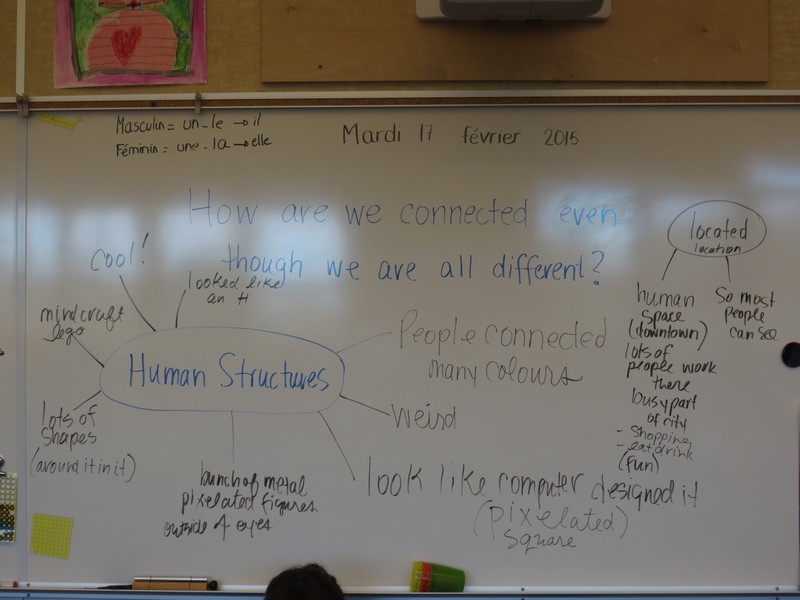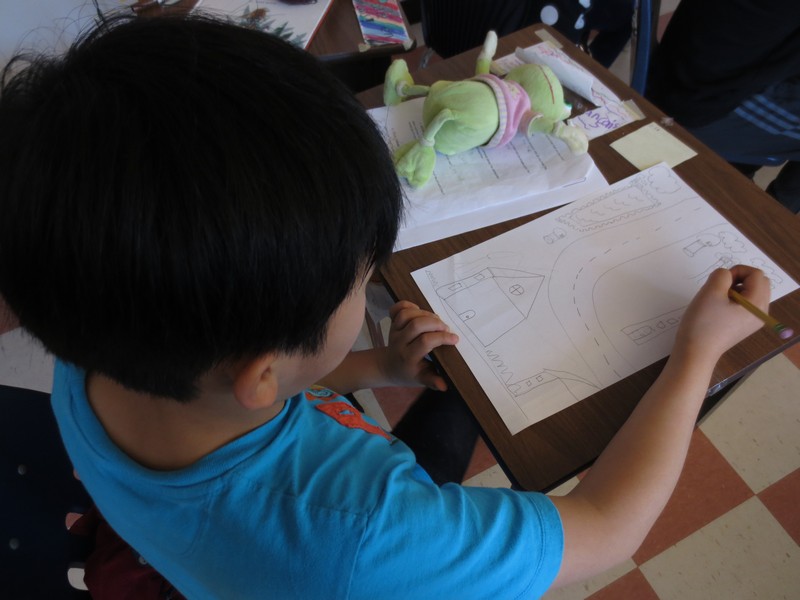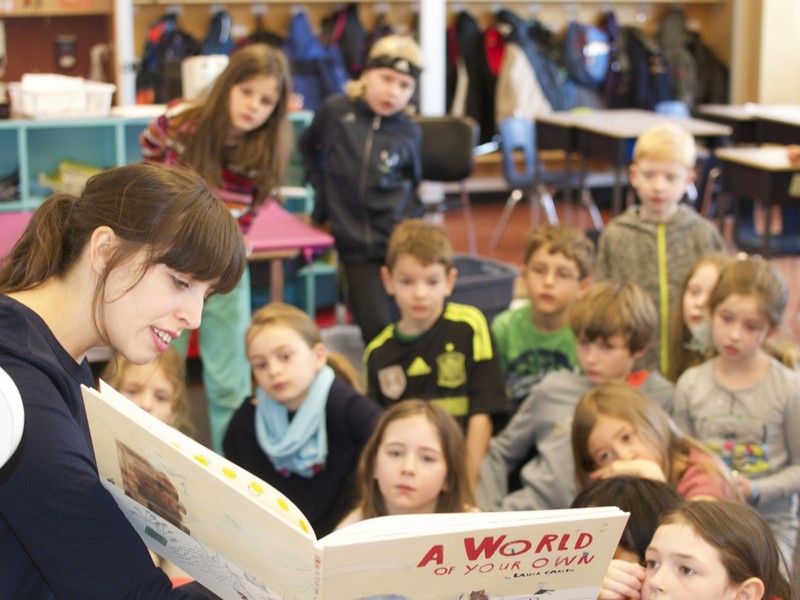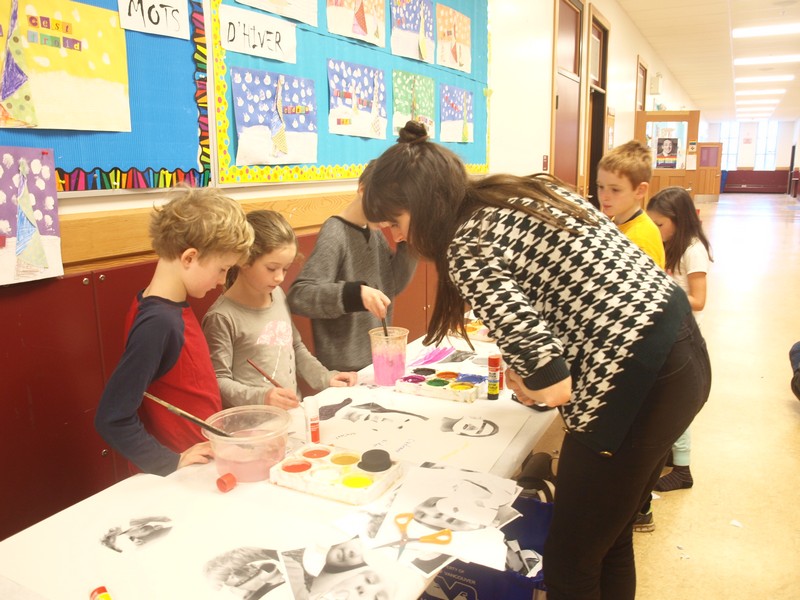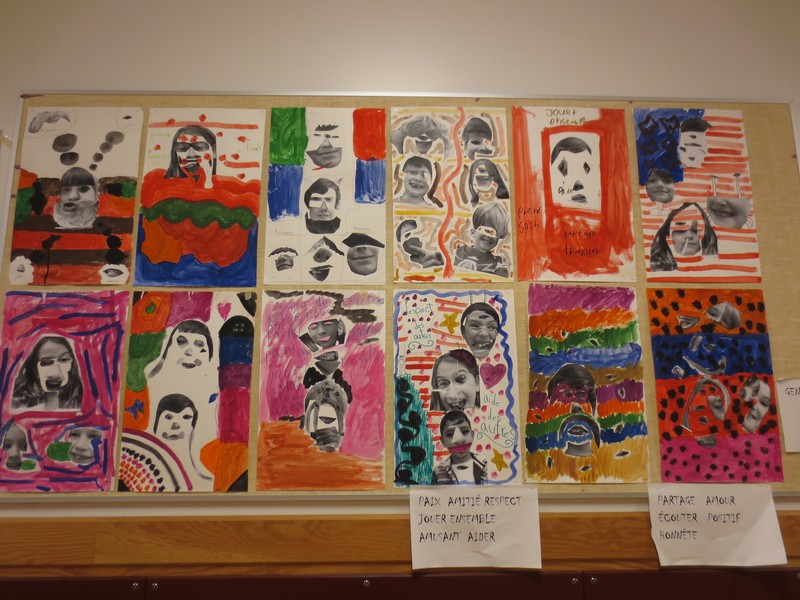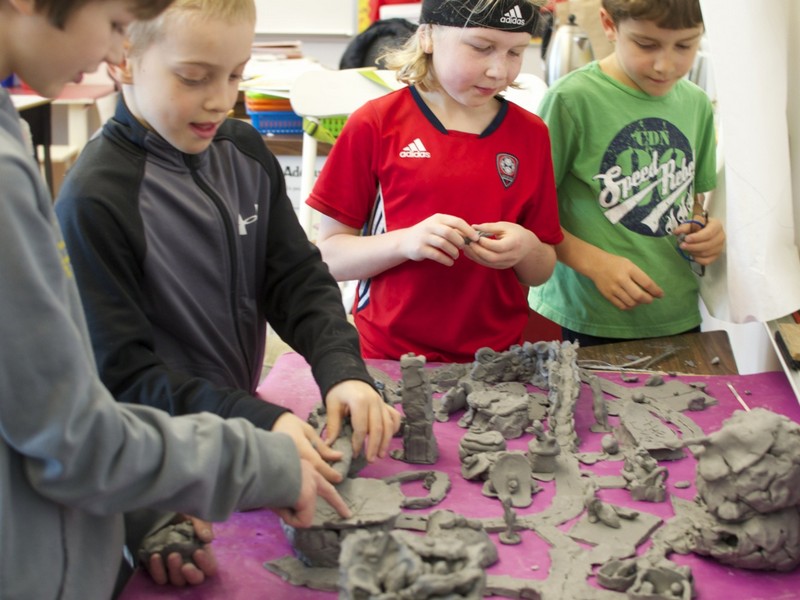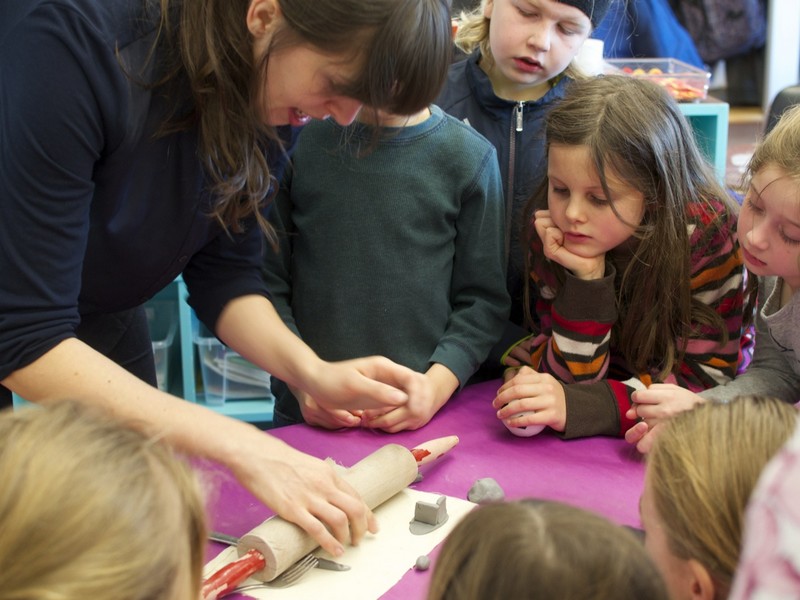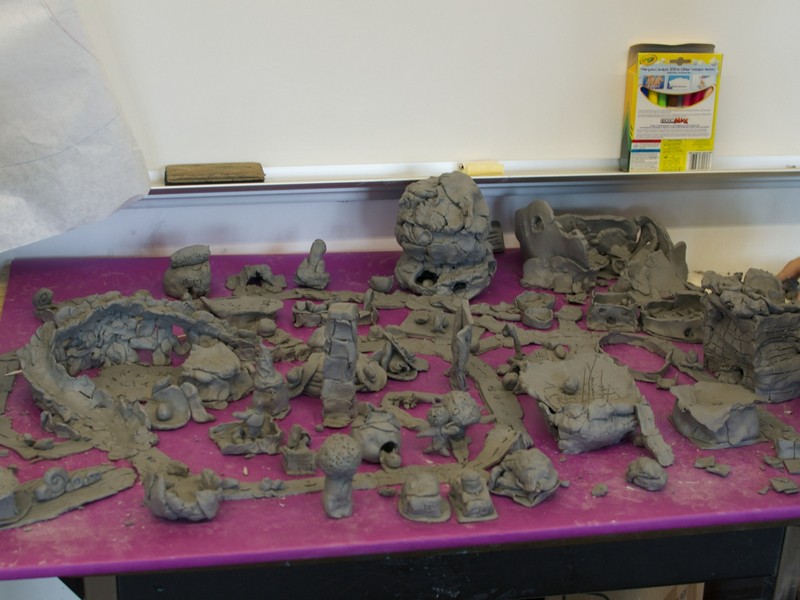École Jules Quesnel: Diversity and Human Interconnectivity
Arts Education, Health and Career Education, Language Arts, Mathematics, Science, Social Studies
School: École Jules Quesnel, Vancouver
Teacher: Elisabeth Sones and Marion Verin
Artist Collaborators: Julia Kreutz
Class: Grade 3
Overview
Students explored diversity and how to build positive human connectivity
Connection to the Vancouver Biennale Exhibition
The Biennale public art Human Structures Vancouver by Jonathan Borofsky is selected as a catalyst for inquiry into the project BIG IDEAS universal connectivity. Through discussions, activities and inquiry challenges that celebrate differences and also help students to recognize similarities across humanity, this project aims to open up the power of the global collaboration and human connectivity. We are all connected for building a better world.
BIG IDEAS
Human inter-connectivity is vital for maintaining positive relationships
Guiding Question
How are we connected despite our diversity?
Cross-Curricular Access
- Health and Career Education: Describe skills to initiate and maintain positive relationships.
- Social Responsibility: Valuing diversity and defending human rights
- Science: Conduct investigations into ways to improve the strength and stability of structures
- Mathematics: Counting the numbers of connectors by using multiplication or addition
- Arts Education: Describe and respond to works of art and explore artists’ intent – Reflect on the creative process and make connections to others experiences
- Language Arts: Express ideas thoughts, feelings, and opinions through various forms of communication – Explore texts to deepen learning and develop a broader understanding of self, family, community, and the world.
Learning Process/ Inquiry Challenges
Defining diversity through literature: “ Tous different” from Ted Parr and “Tout allait si bien…” from Franck Prevot. Human Web Activity: to explore human connectivity. Students connecting with each other to form a pattern of a web enabling the students to learn how we can connect with others, literally and socially. The students then took selfies with the others they are connected with in the web. The students were encouraged to be themselves and express themselves without any inhibitions. The entire human-web activity was recorded for viewing by the students. After watching the video of the human-web activity, the students were asked to respond to: how it is to be connected to people? What are the similarities and what makes each person unique? Does the web represent a community? What is an important aspect of the community? And what kinds of communities are we a part of? The responses to these questions were incorporated throughout the project, in discussions and art-making exercises. Composite Self-Portrait: The students made self-portrait collages using the selfies that were taken during the human-web activity. This art-making activity enables the students to explore and represent the similarities and the uniqueness of themselves and their classmates, with whom they took the selfies. They conducted short interviews with their friends whom they took selfies with as a part of the research prior to working on their collages. The students created incredible portraits using their imagination and their ideas of what made us similar and what was unique about each of us, expressing themselves freely. To enhance their learning experience, the students brainstormed words related to human connectivity with their teacher to use in the composite self-portraits. Celebrating Diversity through Colour at Human Structures Vancouver: Students were introduced the notion of diversity through colour. They shared with each other why the artist might have chosen different colors and their personal color preferences. The students inquired into what if the art piece would have had the same color. Explore what each color could represent: language, culture, sport, interest etc… A Utopia Community: These responses were unpacked in the following session and were fed into the final art-making project to create a community, a utopia, using clay, where each student contributed by building various aspects of the community. The students were challenged to imagine a future which was peaceful and ideal by traveling through a time machine. The students created concept drawings and through sharing their ideas with the class, the students got to see how every person had a different view of utopia and respecting others’ views was a crucial part of it. The students exhibited incredible imagination, creativity and cooperation in the final art-making activity. They engineered a clay model of their utopia. Each class had a different approach to this final group activity. It was a product of collective imagination and individual contribution. The project was wrapped up with a final reflection, discussion and celebration of their utopian community. Reference Resources: Songs Enfants de la terre: https://www.youtube.com/watch?v=3uhYJsVuMLM Enfants de paix: https://www.youtube.com/watch?v=cLSB0EqW71E
Student Creation
• Composite self-portraits • Concept drawings for the clay model • Clay model of an ideal community/ utopia
Timeline
January Planning and conceptualizing sessions. The artist and the teachers planned the entire project, enlisting the objectives, approach, workshop activities February The artist visited the school for an introductory workshop and human-web activity to explore how we connect with people around us. Working with the artist, the students took selfies in the human-web with the others who they were connected with Reflection and inquiry based on the human-web activity: The students responded to questions about similarities and differences between people who are connected, what kind of communities we are a part of. These ideas were then explored further through composite self-portraits that were made with the selfies Demonstration of collage making techniques and aspects of framing and painting in collage Art-making activity: Composite self-portrait Field trip to the Human Structures Vancouver: The students worked on art-inquiry worksheet during the field trip Post-field trip reflection: The artist and the teacher facilitated a discussion on the experiences and observations during the field trip. Discussions about utopia Concept drawings of their utopia and sharing of views of the perfect community Final art-making activity: Clay model of an ideal community/ utopia
Reflection
Teacher – Marion Verin and Elisabeth Sones During one month, my Grade 3 class and Elisabeth’s Grade 3, we had the chance to work with Julia. The topic we chose was about connection and differences. This topic is essential in our society and especially in our mini-society in our classroom. Julia brought many great ideas to our students. They engaged immediately in all her activities thanks to her enthusiasm and passion to share about art. She was able to let them use their imagination and encouraged them in every step of their journey together. The diversity of the activities was a treat for the students: photography, collages, clay… It’s amazing how at their age they are able to reflect on deep concepts all together and at the same time they are able to love any artistic activities. Both classes had lots of fun and they really appreciated those diverse ways of learning. Being able to go admire the art work at False creek was a big success. Many students went to see the structure again or to discover others pieces of art along the city. This experience was truly amazing and we are proud to have been a part of it! Artist – Julia Kreutz We started off the project through an icebreaker and a get to know each other session. It got the students to activate space by connecting to one another in different ways and also got them interacting with students they may not often associate with. The students then took selfie images of themselves and the students that they were connected to throughout our activity. Practicing kindness was key. During the next session the students were asked to interview the people that they took selfies with to help them get to know one another better and to see what they have in common and what might be different about them. We generated interview questions together in a group and then the students could choose which questions they would ask to which person. This was a fun activity that got the students to practice an inquisitive conversationalist style of interacting, an important tool for getting to know people in our communities. The next session consisted of creating composite self-portraits of themselves and the other students in their selfie images. To prep the activity we talked about community and how we learn form one another in our community. We spoke about what helps to build a positive community and the students’ brainstormed French words that reflect their ideas of a positive community. We worked in small groups to develop their own personal art piece using collage, font exploration and painting. The students loved playing with the facial features and came up with fun and inventive portrait alterations. I loved the juxtaposition of their self-portraits that they had finished with their teachers earlier in the year (more of a modernist style) vs. these deconstructed (post-modernist) renditions. It really helped to create a well-rounded exploration into the arts of portraiture. Finally, with all of these learning tools in hand the students went to the Borofsky sculpture with a work sheet in hand that assisted them in exploring the sculpture in different ways. This field trip was successful thanks to the support of the parents that came to assist the students in groups of three. These small groups helped to keep the students focused and helped with reading and writing. The students enjoyed the sculpture and came up with a lot of great dieas. For our next session, we went through the worksheets and answered the questions in a full group and created a large mind map on the board that shared the student’s observations, speculations and questions about the sculpture. Katherine was here for this class and interjected with some knowledge about the sculpture to answer some of the student’s questions. Each of these groups had a bit of a different experience as we flowed through the thoughts of the students and I tried to pull specific details from the conversations that connected the sculpture of our Big Idea. Even though we are all different we come together to build our community was one of the main ideas that we came up with that answered our big ideas question – How are we Connected Despite Our Diversity? At the end of these conversations I framed a free drawing activity by saying. “I built a time machine and I went to the future, I saw that the world was perfect, it was a utopia, what does that look like?” Then I allowed the students to draw their depictions of utopia freely without interjection. For the last and final class I read the book ‘A World of Our Own’ by Laura Carlin to the students and then the students created, ‘A World of Their Own’ out of clay. I showed them some brief demos, but mostly left the medium and the objective for the students to explore and work out with one another. This was a great activity to get the students to work together, or work on their own if they so preferred, I saw leaders born, artists, architects, conservationists and engineers. It was an engaging and fun activity to finish of the project. I had an amazing time with the students and teachers at Jules Quensel Elementary and am inspired by their warm nature and quality of education.
Credits
Photos at the Human Structures Vancouver by roaming-the-planet
Related Material
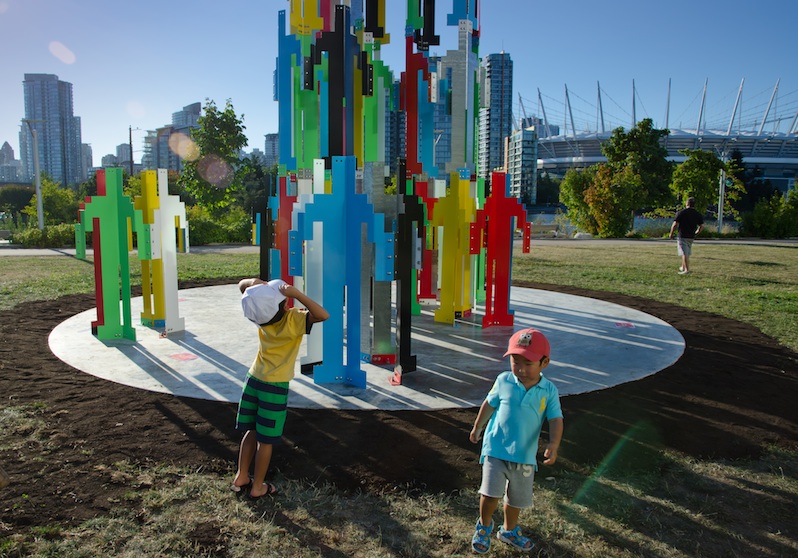 Human Interconnectedness
Human Interconnectedness
